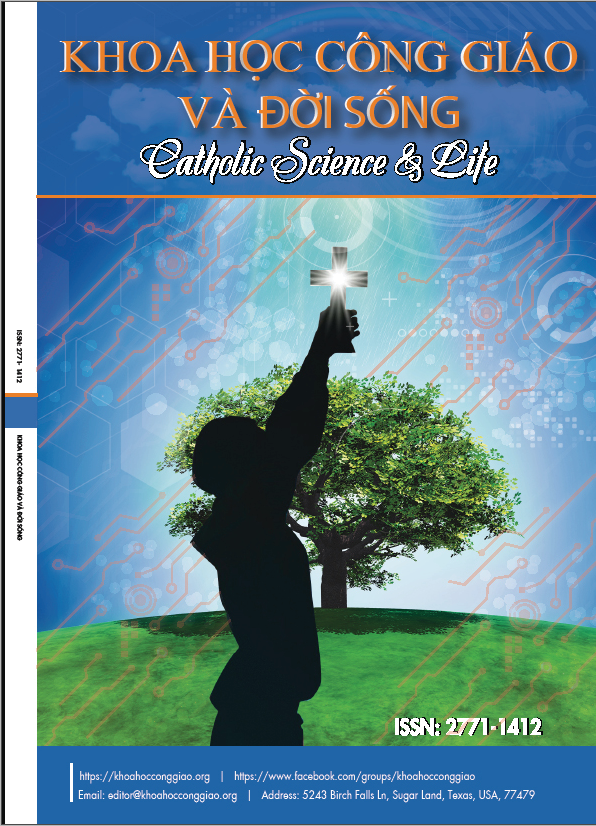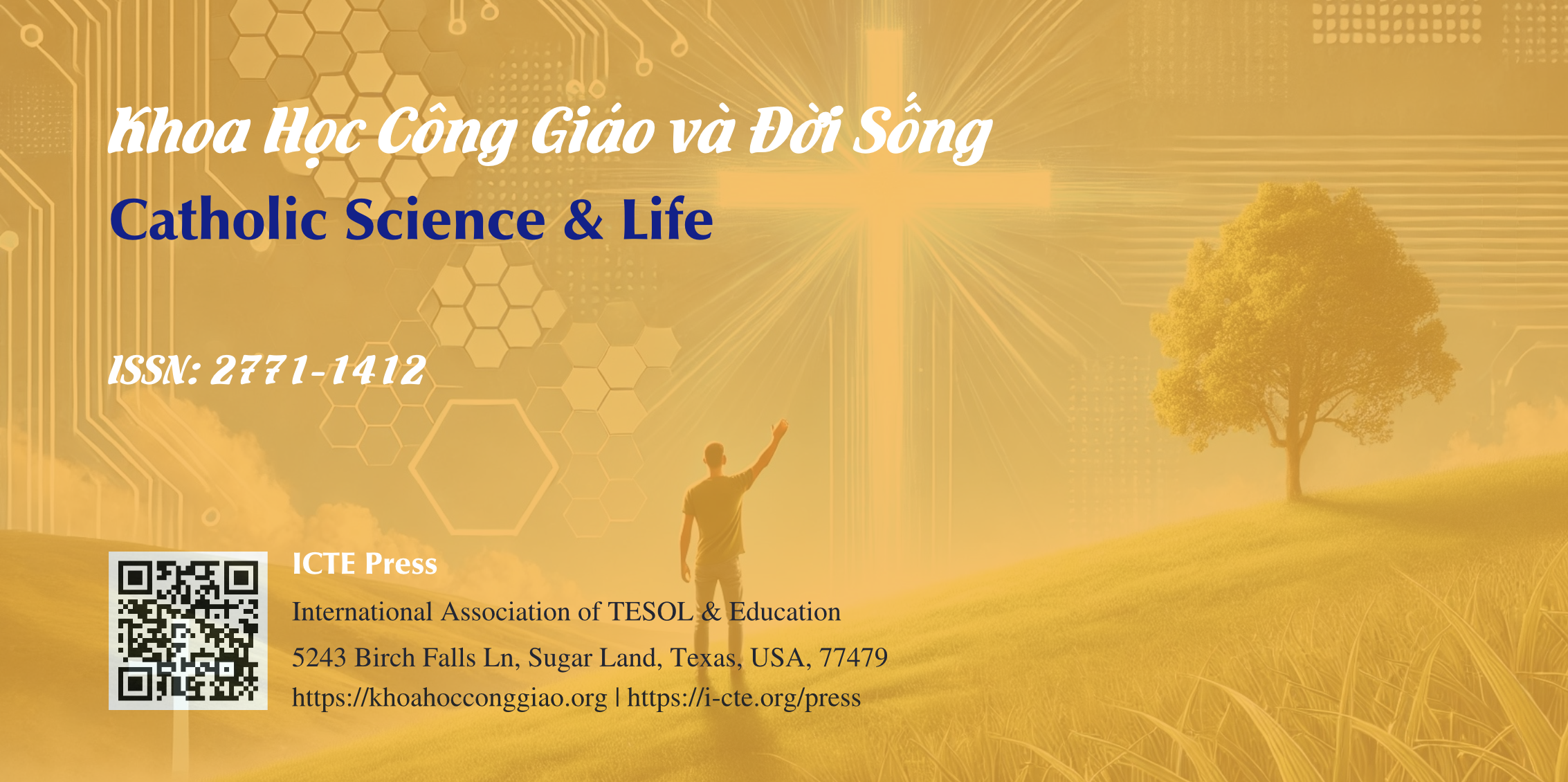Cuộc Xuất Hành Mới
Trong Is 43,14-21
DOI:
https://doi.org/10.54855/csl.22228Từ khóa:
xuất hành mới, Đức Chúa, lưu đày, hồi hương, cứu thoátTóm tắt
Đối với dân Ít-ra-en, biến cố lưu đày Babylon-hồi hương mang ý nghĩa đặc biệt và quan trọng. Đây được coi là cuộc ‘lưu đày nội tâm’ vì nỗi ‘tưởng nhớ Si-on’ (Tv 137) phải khóc than bên những dòng sông Ba-by-lon, cảm thấy mình như những ‘tử thi’ (Tv 88,6), những kẻ dưới mồ’ (Tv 29,4), hay những ‘bộ xương khô’ (Ed 37,1-3),… Tuy vậy, cuộc sống nơi đất khách không đến nỗi vất vả do chính sách trị dân của hoàng đế Ky-rô. Dân cũng không bị đồng hóa vì trộn lẫn với lân bang. Dân đã dần ổn định cuộc sống qua thời gian. Vì vậy, cuộc hồi hương rời bỏ Babylon trở nên thách đố. Hồi hương đồng nghĩa với việc chấp nhận khởi đầu lại từ đầu, bởi quê hương đã bị tàn phá nặng nề (Ac 1,1-7.8-10.11-17; Ge 1,2-20). Chọn lựa ở lại hay hồi hương rơi thế ‘lưỡng nan.’
Để dân thêm động lực hồi hương, nhiều vị ngôn sứ Giê-rê-mi-a, I-sa-i-a, … đã có những nỗ lực theo cách thức hết sức đặc biệt. Trong đó, I-sa-i-a dùng motif “xuất hành” để loan báo về một cuộc xuất hành mới (Is 43,14-21). Lời động viên cho cuộc xuất hành này thực sự mang một tầm mức mới, bởi đã khơi lại nguồn sức mạnh thiêng liêng ẩn tàng trong dân, giúp dân Ít-ra-en vượt lên thế lưỡng nan “ra đi-ở lại”, cùng quyết tâm đối diện với những thách đố hiện tại. Bài viết này đào sâu chủ đề xuất hành mới trong Is 43,14-21, với 3 khía cạnh cơ bản: (1) Thiên Chúa hứa ban cuộc giải thoát; (2) Đức Chúa là Đấng thực hiện lời hứa giải thoát; (3) Cuộc xuất hành mới là cuộc sáng tạo mới.
New Exodus – In Is 43, 14-21
The Babylonian exile-repatriation event is significant to the Israelites. This is referred to as the 'inner exile,' since the'remembering of Zion' (Ps 137) was forced to lament beside the Babylonian rivers, feeling as if they were 'dead corpses' (Ps 88, 6), 'those in the grave' (Ps 29:4), or 'dry bones' (Ez 37.1-3), etc. However, life in a foreign place was not as terrible as it appeared owing to the people's political policies. of Cyrus the Great. Individuals do not get absorbed just by mixing with their neighbors. Over time, people have increasingly stabilized their lives. As a result, repatriation from Babylon became difficult. Returning home necessitates a fresh start, as the motherland has been ravaged (Ac 1:1-7.8-10.11-17; Ge 1:2-20). The decision to remain or repatriate is a 'dilemma.'
To increase people's urge to return home, several prophets such as Jeremiah, Isaiah, and others made extraordinary efforts. Isaiah used the "exodus" concept in this passage to announce a fresh exodus (Is 43:14-21). The encouragement for this exodus reached a new level as it reawakened the spiritual strength concealed within the people, assisting the Israelites in overcoming the problem of "going out and staying." This essay explores the idea of the new exodus in Is 43:14-21 from three fundamental perspectives: (1) God's deliverance promise; (2) The Lord is the One who keeps the deliverance promise; (3) The new exodus is the new creation.
Keywords: new exodus, Lord, exile, repatriation, deliverance
Tài liệu tham khảo
B. Anderson & W. Harrelson, eds. (1962). Exodus Typology in Second Isaiah, in Israel’s Prophetic Heritage: Essays in Honor of James Muilenburg. New York: Harper & Brothers, 181-182.
Cao Gia An (2021). Bài giảng khóa học ‘Ngôn Sứ’ tại Học viện Dòng Tên Việt Nam, tháng 01-02/2021.
Claus Westermann (1969). Isaiah 40-66 - A Commentary. Pennsylvania: The Westminster Press, 125-126.
Dale A. Patrick (n.d.). Epiphany Imagery in Second Isaiah’s Portrayal of a New Exodus. Drake University, Des Moines, Iowa, 126.
Gerand O’Collins (2011). Rethinking Fundamental Theology. Oxford: Oxford Uni. Press, 191-193.
K. M. Yates (1954). The Essentials of Biblical Hebrew, 129.
Leslie C. Allen (1983). Word Biblical Commentary: Vol. XXI - Psalms 101-150. Texas. 174.
Joseph Blenkinsopp (2002). Isaia 40-55 - A New Translation with Introduction and Commentary. New York: Doubleday, 226.
John Goldingay (2014). The Theology of the Book of Isaiah. Downers Grove: InterVarsity Press, 63.
Rolf Rendtorff (1989). Covenant’ as a Structuring Concept in Genesis and Exodus,” in Journal of Biblical Literature, vol.108, no.3. Autumn, 385-393.
Ulrich F. Berges (2012). The Book of Isaiah- Its Composition and Final Form. Sheffield: Sheffield Phoenix Press, 300-302.
Ulrich F. Berges (2012). The Book of Isaiah- Its Composition and Final Form, 303.
Tải xuống
Đã Xuất bản
Số
Chuyên mục
Giấy phép
Bản quyền (c) 2022 Antôn Nguyễn Quang Huy, S.J.

Tác phẩm này được cấp phép theo Giấy phép quốc tế Creative Commons Attribution-NonCommercial 4.0 .
Authors retain copyright and grant the journal the right of first publication with the work simultaneously licensed under a Creative Commons Attribution 4.0 International License that allows others to share the work with an acknowledgment of the work's authorship and initial publication in this journal.
Authors are able to enter into separate, additional contractual arrangements for the non-exclusive distribution of the journal's published version of the work (e.g., post it to an institutional repository, in a journal or publish it in a book), with an acknowledgment of its initial publication in this journal.













